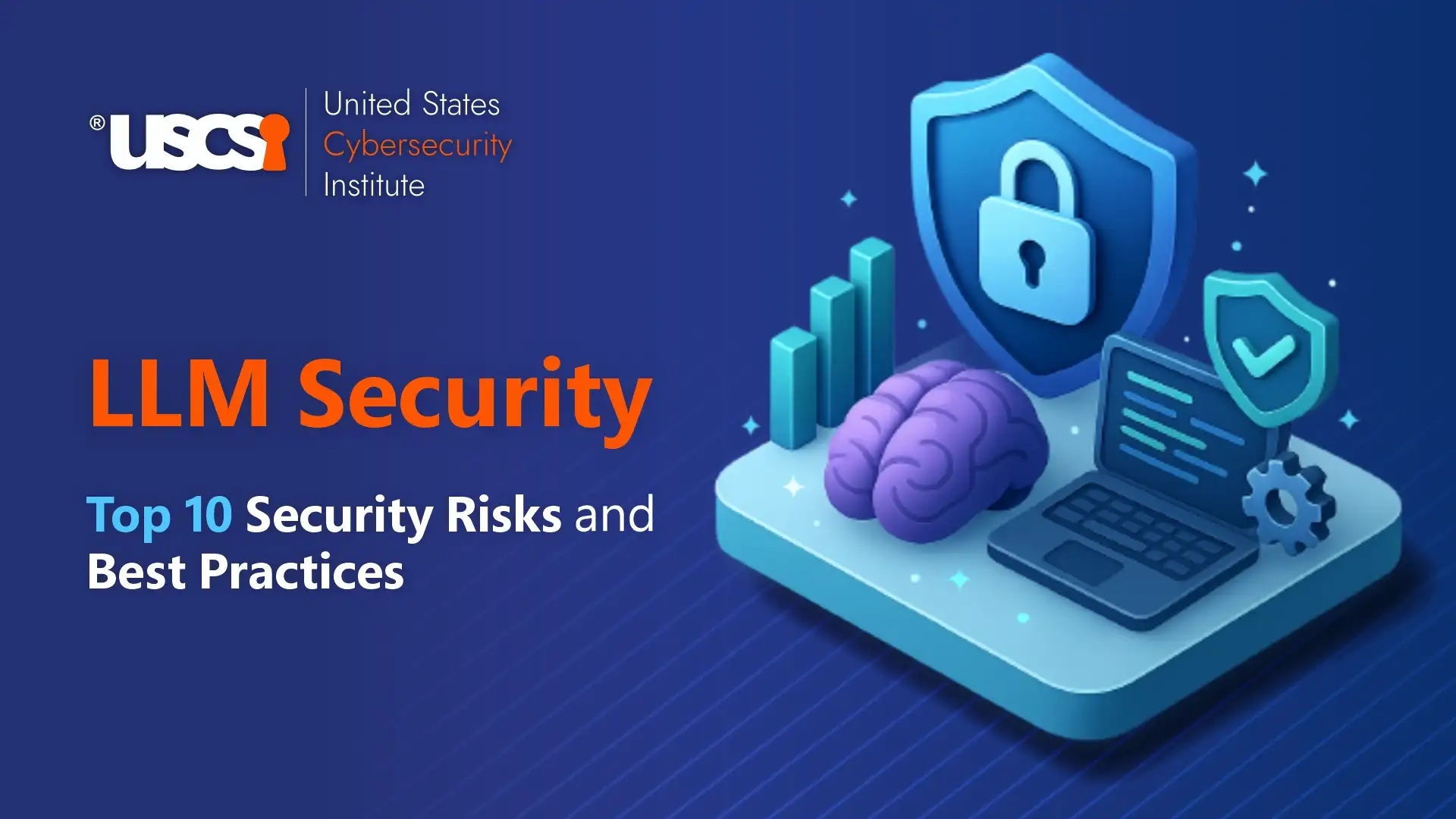

What are LLM Security Risks and Mitigation Plan for 2026
Today, Large Language Models (LLMs) are a highly crucial part of smart systems, from AI copilots and autonomous agents to cyber-attack detection tools. But as they become more powerful, the attack surface expands. In the current time and the future, LLMs aren’t only assisting enterprises in detecting threats—they’re becoming high-value targets.
Did you know that around 45% of AI-generated code contains security flaws? (2025 GenAI Code Security Report - Veracode)
In this blog, we explore the major LLM security risks and mitigation best practices to empower AI security in 2026 and beyond.
What is an LLM?
Large Language Models (LLMs) are advanced AI systems trained on huge text datasets from books, code, and online material to generate human-like responses. Unlike more traditional software, LLMs learn patterns, rather than rules — they “understand” relationships among words, among contexts, and among meanings. Interesting, right?
In a study, it was found that more than 100 large language models (LLMs) across 80 different coding tasks showed no improvement in security across newer or larger models, alarming for those companies that totally rely more on AI tools to backup or replace human productivity. (TechRadar)
What is Large Language Model (LLM) Security?
Let’s now explore the LLM security.
It’s a way of securing the entire lifecycle of a Large Language Model (LLM). It aims to protect it against manipulation and unauthorized access, data theft, and misuse of model results that could cause damage in any possible way.
LLM security risks are divided into two main categories:
- Training-time risks: Such as data poisoning, backdoor, or model extraction or theft.
- Inference-time risks: Such as prompt poisoning, prompt leakage, or insecure outputs.
These risks are further increased when LLMs integrate with external systems like databases, APIs, and also cloud services - particularly in Agentic AI in cybersecurity scenarios, wherein the model can act on behalf of users.
Top 10 LLM Security Risks in 2026
1. Prompt Injection Attacks
It is the strongest and most frequent type of attack. In a prompt injection attack, an attacker injects hidden instructions into user text or external documents that somehow cause the model’s computation to execute unwanted commands.
2. Jailbreaking and Prompt Hacking
Attackers frequently design special instances of text prompts to confuse an AI, tricking it into ignoring its own preprogrammed rules. This method is called jailbreaking. These prompts exploit how the model understands language, basically manipulating it to disclose sensitive information or produce private, sensitive, or biased content.
Prompt hackers rely on reinforcement algorithms to create jailbreak sequences, trying thousands of variants until they become successful in their goal. Large language models are insufficiently defensible; their security against such pressure's crumbles.
3. Data Poisoning and Backdoor Attacks
The next biggest LLM security risk is data poisoning. It occurs when incorrect or malicious data is used in a training dataset, leading the model to be trained by incorrect patterns or unsafe behaviours. Backdoor attacks are more dangerous — they plant secret triggers in the data so that the model acts completely maliciously only when a specific word or condition arrives.
4. Model Extraction and Theft
Attackers could query the API of an LLM multiple times to estimate its knowledge base or even recreate the model; this technique is called model extraction.
5. Membership Inference and Model Inversion
Membership inference is a privacy-related attacks that check whether a certain piece of data was part of the model’s training data. Model inversion goes a step beyond that: it recreates an approximation of the dataset from model predictions.
6. Embedding Inversion and Vector Database Leaks
For retrieval-augmented generation (RAG) systems, we keep the precomputed embeddings in a vector database to assist the model in kinematically retrieving information. However, if attackers can get their hands on those embeddings, they can reverse engineer them to recover sensitive text or documents.
7. Unsafe Output Execution
LLMs can generate executable code, requests, or API calls. If developers directly run them, they could execute malicious payloads created by the model. This requires output validation and sandboxing. Distrust all LLM output--especially in autonomous agents or DevOps copilots.
8. Resource Exhaustion and DDoS via Token Flooding
An LLM API can be overwhelmed by receiving huge or complicated prompts that lead to high compute utilization or denial of service. As LLMs are billed per token, this could cost an organisation a substantial amount of money or operational downtime. Rate limiting, usage tracking, and adaptive throttling are required mechanisms to protect against this vector.
9. Agentic AI Misuse and Vibe Hacking
As we shift towards Agentic AI, LLMs that can do things on their own initiative, such as make API requests or remote-control software, attackers have begun “Vibe hacking.”
10. Supply Chain and Insider Risks
LLMs are fed from various external sources— such as datasets, APIs, from vendors, as well as open platforms. This networked system of supply chain interdependency leaves them open to an attack.
How to Mitigate LLM Security Risks: Best Practices for 2026
1. Isolate System Prompts
The fundamental procedure to prevent prompt injection attacks is isolating system prompts from user input. Handle your system instructions as a locked vault; no user should be able to delete or replace them.
- Keep system-wide messages in some secure place, where you control who can access them.
- Don't append user queries to system commands.
- Make sure you validate the context layer before you run your response.
By this simple design, most prompt hacking/override attempts, which may affect the behaviour of models, are eliminated.
As per the dark reading study, today, popular LLMs are built on tens of terabytes of literature, Internet data, etc. But there's only so much malware out there, and even a small fraction of which any one hacker can get their hands on — and it's not enough to train a model on consistent and effective autonomous malware development.
2. Sanitize Inputs and Validate Outputs
Always sanitize the data your model is inputting and the answers it is outputting. Check for any strange hidden code, links, or weird characters. Review the responses of the model for any private or harmful material before releasing them. This is not only saving you but also your other users of the system.
3. Secure Private and Sensitive Data
Use encryption and data decryption. Use differential privacy so that the model can train on data without learning personal details. Frequently test your system to verify it is not exposing any sensitive information in responses.
4. Protect RAG and External Data Connections
If your LLM employs retrieval-augmented generation (RAG), or pulls from external databases, add strict access rules. Encrypt data and log who accesses it. Always be sure to clean and verify your information before inserting it into model prompts, to prevent prompt hacking or the leakage of personal data.
5. Detect Attacks and Limit Access
See how users engage with your LLM. Curtaille systems on the number of prompts/tokens that may be used at any given time. Leverage smart monitoring to detect suspicious patterns, such as long or repeated requests that may indicate model extraction or DDoS attacks.
The Bottom Line
Large Language Models are not simply tools; they’re digital assets that require a level of protection equal to what businesses apply to other digital assets. Knowing risks is also the first stage on the way to LLM security. Those who invest in their work with intelligence and resilience will be the future of AI security.





